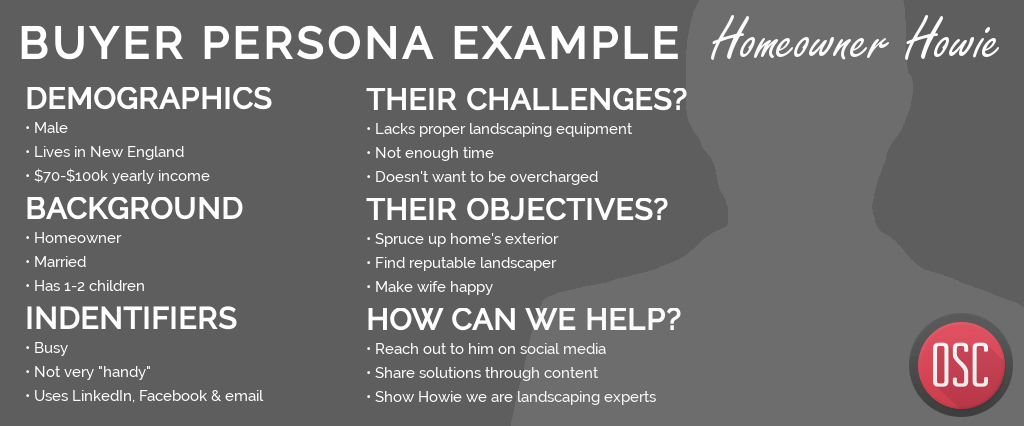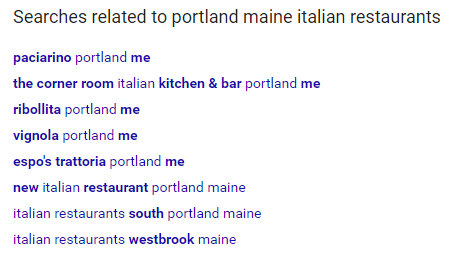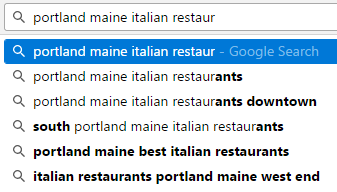When you first considered what would be involved in starting a small business, blogging probably wasn’t at the top of your to-do list. Lo and behold, here you are.
If it’s any consolation, you’re not alone! Thousands of business owners are becoming blog writers simply because they have to. In order for your website to rank in search engines and attract the right visitors, content creation is instrumental.
So you’re not much of a writer? No worries. You can get started in 4 steps!
Step 1: Define your target audience.
Us marketers like to refer to a target audience as your buyer personas. You probably already have a good general idea of your target market and who needs your services, but we’re advising you take it a step further.
When blogging, it’s important to have a specific audience in mind – or even one person. This ensures your message is clear and relates to their current thought process.
This is where buyer personas come in. By developing a semi-fictional representation of your audience, you can answer their unique questions, address their concerns, and help connect them with their goals.
For example, imagine you own a landscaping business. This is an example of how you’d define a buyer persona:
Not every one of your customers are going to fit the descriptions of your first buyer persona, which is why you should create a few. Just enough to roughly represent different groups in your customer base.
Step 2: Find the right keywords.
It may be wise to request complete keyword research for your website from an experienced search engine optimization firm. If you’d prefer to find keywords yourself, start by compiling a list of words that users are likely to enter into a search for your small business.
It’s okay to start with broad keywords like ‘restaurant’ but you really want to work towards specific, long-tail keywords like ‘portland, maine italian restaurant’.
Long-tail keywords cut out some of your competition in search engines and they attract qualified visitors. If you own an Italian restaurant in Portland, Maine, wouldn’t users searching for that specifically be more likely to convert into customers?
If you’re running out of ideas, start typing broad keywords into Google. Google’s search suggest is a great tool as well as the list of related searches at the bottom of search results.
Take the list of keywords you’ve come up with and enter them into Google Trends. This allows you to determine if anyone’s actually searching your keywords or if they’re too specific.
⭐ When using keywords within your content they should read naturally; never sacrifice readability for keywords.
Step 3: Come up with topics.
You can use your buyer personas, keywords, and many other sources to inspire topics.
Buyer Personas
Using the buyer persona example of Homeowner Howie, one of his concerns were that he doesn’t want to be overcharged. If you were a landscaping business, you could write a blog post like ‘How Much Your Landscaping Should REALLY Cost’ or ‘5 Tips for Getting the Best Deal on Landscaping’.
Keywords
One of the keyword examples used above in Google’s related searches list for ‘portland maine italian restaurant’ was ‘new italian restaurant portland maine’. Your restaurant could write a blog post like ‘The New Italian Restaurant in Portland, Maine You MUST Try’.
Forums
If you’re wondering which questions your audience is asking, forums are a great place to look. Their questions can inspire you and even any common misconceptions you find there can be cleared up in a blog post.
There are so many other sources that you can use to come up with content ideas. For more inspiration, check out our article that outlines 45 of them.
Focus on thoroughly explaining each topic, as well as the topics within each topic. Google’s search algorithms seem to be favoring websites that have topical authority.
Step 4: Get organized.
Blogging multiple times a week can be overwhelming. If you can establish consistent organization from the get-go, it’ll save you from headaches in the long run.
Using an editorial calendar is a must. In this you can keep track of the topics you’ve already covered, when they were published, and the social media posts you wrote to promote them.
Here at OSC we are loyal Google Docs users. You can create, store, and edit documents for free online. Our favorite feature is that they are easily shared with clients or among our team.
As you can see, you don’t have to be a skilled writer to start blogging for your business. All you need is the patience, dedication, and time to create content with value.





